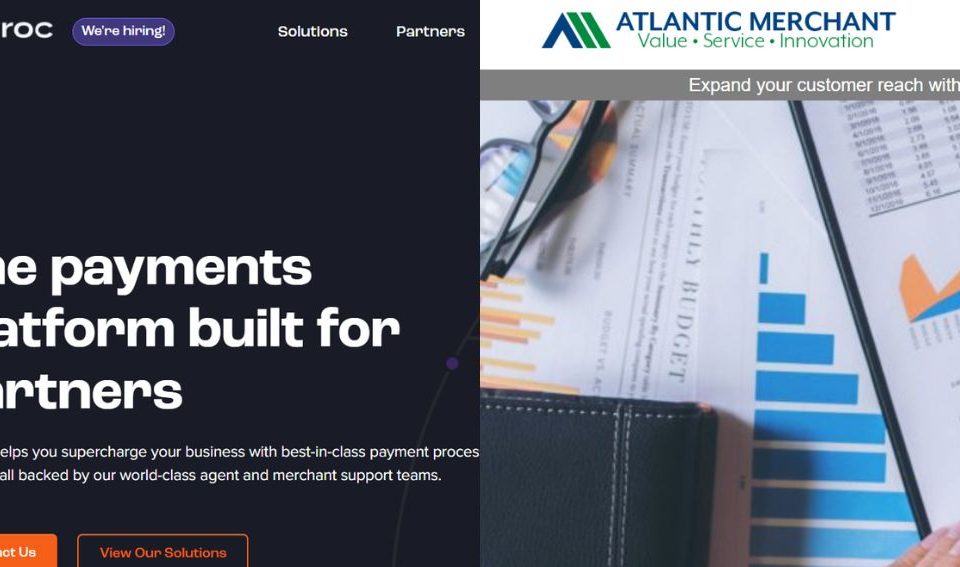What Are M&A Earnouts?

What You Should Know About M&A Confidentiality Agreements
June 30, 2023
What Are Fiduciary Duties: Minority Shareholder Rights
July 5, 2023In the fast-paced world of business, mergers, and acquisitions (M&A) have become an integral part of corporate strategies, allowing companies to expand their reach, diversify their offerings, and gain a competitive edge. Yet, amidst the complexities of these deals lies a lesser-known concept that can hold tremendous sway over their ultimate success: the enigmatic world of M&A earnouts. Imagine a high-stakes negotiation where the future performance of a target company becomes the cornerstone of the deal, bridging the gap between buyer and seller and holding the key to unlocking the full potential of an acquisition. These financial arrangements, shrouded in both risk and reward, have the power to transform the landscape of entire industries.
In this captivating exploration, we will unravel the mysteries of M&A earnouts, delving into their purpose, mechanics, benefits, and the intricate dance of calculations that can shape the destiny of organizations. Prepare to embark on a journey into the dynamic realm of M&A transactions, where the promise of prosperity and the specter of uncertainty intertwine in a delicate balance. Welcome to the world of M&A earnouts, where the present collides with the future, and the fate of companies hangs in the balance.
What are M&A Earnouts?
M&A earnouts, short for “earnings outs,” are financial arrangements commonly employed in merger and acquisition transactions. In these deals, the buyer agrees to pay a portion of the purchase price based on the future performance of the target company. Earnouts serve as a mechanism to bridge valuation gaps between buyer and seller, particularly when there are uncertainties surrounding the target’s future financial performance or growth prospects.
Under an earnout agreement, the seller stands to receive additional payments if specific milestones or financial targets are achieved within a predetermined timeframe. These milestones are typically tied to the financial metrics of the acquired company, such as revenue, profitability, or market share. By linking a portion of the purchase price to future performance, earnouts align the interests of the buyer and seller, as both parties share the risk and reward of the transaction.
Earnouts can be a valuable tool in M&A deals, allowing buyers to mitigate risks associated with uncertain performance and giving sellers an opportunity to maximize their returns. However, they also introduce complexities in terms of negotiating, structuring, and valuing the earnout provisions, often requiring careful planning and detailed documentation to ensure clarity and fairness for all parties involved.
How do M&A Earnouts Work?

M&A earnouts serve as a mechanism to bridge valuation gaps between buyers and sellers in merger and acquisition transactions. They are designed to link a portion of the purchase price to the future performance of the target company, aligning the interests of both parties.
Key Components of M&A Earnouts:
Performance Metrics
Earnouts are typically tied to specific performance metrics, such as revenue, profitability, market share, or other agreed-upon targets. These metrics serve as benchmarks to determine the earnout payments.
Earnout Period
An earnout period is defined, typically ranging from a few months to a few years, during which the performance metrics are evaluated to determine the earnout payments.
Earnout Amount and Payment Structure
The earnout amount is the maximum potential payment the seller can receive, and it is usually based on a percentage of the total purchase price. Earnout payments are often structured as either fixed amounts or calculated based on a formula using the achieved performance metrics.
Negotiating and Structuring M&A Earnouts:

Milestone Setting
Buyers and sellers negotiate and set specific milestones that the target company must achieve to trigger earnout payments. These milestones should be realistic, measurable, and clearly defined to avoid disputes.
Earnout Duration and Contingencies
The duration of the earnout period and any contingencies, such as non-compete agreements or retention of key employees, are established to ensure the seller’s actions do not hinder the target company’s performance.
Dispute Resolution Mechanisms
To address potential disagreements regarding earnout calculations or milestone achievements, dispute resolution mechanisms such as arbitration or expert determination may be included in the earnout agreement.
Benefits and Considerations of M&A Earnouts

Risk Mitigation
Earnouts allow buyers to mitigate risks associated with uncertain future performance by aligning a portion of the purchase price with the target company’s actual results.
Seller Incentives
Earnouts provide sellers with incentives to maximize the target company’s performance during the earnout period, potentially leading to higher earnout payments.
Complexity and Documentation
The negotiation, structuring, and documentation of earnouts can be complex, requiring careful attention to detail to ensure clarity and fairness for all parties involved.
Post-Acquisition Integration
Integration challenges can impact the target company’s performance during the earnout period, so buyers must consider the potential effects of integration on earnout outcomes.
Overall, M&A earnouts work by linking a portion of the purchase price to the future performance of the target company. They involve negotiating specific milestones, setting performance metrics, and determining earnout amounts and payment structures. While they offer benefits such as risk mitigation and seller incentives, they also require careful consideration, negotiation, and documentation to ensure their successful implementation in merger and acquisition transactions.
How to Calculate M&A Earnouts

Calculating M&A earnouts involves determining the earnout payment based on the agreed-upon performance metrics and the achieved results during the earnout period. The specific calculation method may vary depending on the terms negotiated between the buyer and seller. Here are some common approaches:
Fixed Amount
In some cases, the earnout payment is a fixed amount agreed upon in the acquisition agreement. It does not depend on the target company’s future performance and is paid regardless of the achieved metrics.
Percentage of Revenue/Profit
A common method is to calculate the earnout payment as a percentage of the target company’s revenue or profit. The percentage is typically determined during negotiations and is applied to the actual revenue or profit achieved during the earnout period.
Multiplier/Formula
Earnout calculations can be based on a formula or a multiplier applied to a specific financial metric. For example, the earnout payment may be determined by multiplying the achieved revenue by a predetermined factor or using a more complex formula considering multiple metrics.
Tiered Structure
In some cases, earnouts are structured with different tiers or thresholds. Each tier corresponds to a specific performance level, and the earnout payment increases as the target company exceeds these performance thresholds.
Discretionary Evaluation
In certain situations, the earnout payment may be subject to the buyer’s discretion or evaluation based on qualitative factors in addition to quantitative performance metrics. This approach provides flexibility but can introduce subjectivity.
It is essential for the earnout agreement to clearly define the calculation method, performance metrics, and any other relevant factors that impact the earnout payment. Dispute resolution mechanisms should also be in place to address any disagreements regarding the calculation or interpretation of the earnout provisions.
Benefits of M&A Earnouts
M&A earnouts offer several benefits for both buyers and sellers involved in merger and acquisition transactions. Here are some key advantages:
Risk Mitigation
Earnouts allow buyers to mitigate risks associated with uncertain future performance. By linking a portion of the purchase price to the target company’s actual results, buyers can protect themselves from overpaying for a business whose performance may not meet initial expectations.
Seller Incentives
Earnouts provide sellers with incentives to maximize the target company’s performance during the earnout period. Sellers have a vested interest in achieving the agreed-upon milestones and financial targets to maximize their earnout payments, thereby aligning their goals with those of the buyer.
Purchase Price Flexibility
Earnouts offer flexibility in structuring the purchase price. Buyers can allocate a portion of the price to be paid based on future performance, enabling them to conserve capital upfront or account for uncertainties surrounding the target company’s financial projections.
Potential Upside
Sellers have the opportunity to earn additional payments beyond the upfront purchase price if the target company exceeds performance expectations. This potential upside can provide sellers with a greater return on their investment and incentivize them to contribute to the success of the acquired business actively.
Enhanced Deal Negotiations
Earnouts can facilitate deal negotiations by bridging valuation gaps between buyers and sellers. If the parties have differing views on the target company’s future prospects, earnouts allow them to find a middle ground by tying a portion of the purchase price to the achievement of specific financial milestones.
Retaining Seller Expertise
When earnouts are structured with performance-based targets, sellers may have the incentive to remain involved with the target company during the earnout period to ensure its success. This can help retain key seller personnel and their expertise, facilitating a smoother transition and integration process.
Market Entry and Expansion
Earnouts can be particularly advantageous for buyers seeking to enter new markets or expand their existing operations. By using earnouts to acquire established companies with a track record in the target market, buyers can leverage the seller’s knowledge, customer base, and industry relationships.
Due Diligence Validation
Earnouts allow buyers to validate the target company’s projected financial performance during the due diligence process. By structuring earnouts around specific financial metrics, buyers can assess the accuracy of the seller’s projections and gain additional confidence in the target company’s potential.
Overall, M&A earnouts offer a range of benefits, including risk mitigation, seller incentives, purchase price flexibility, and the potential for additional returns. They can help facilitate deal negotiations, retain seller expertise, support market entry, and expansion strategies, and validate financial projections, making earnouts a valuable tool in merger and acquisition transactions.
Final Words
In conclusion, M&A earnouts play a pivotal role in merger and acquisition transactions, bridging valuation gaps and aligning the interests of buyers and sellers. These financial arrangements provide a means to mitigate risk, incentivize sellers, and offer flexibility in structuring the purchase price. By linking a portion of the payment to future performance, earnouts foster collaboration, encourage seller involvement, and validate projected financial outcomes.
While earnouts bring benefits such as risk reduction and market entry opportunities, they also require careful negotiation, clear documentation, and dispute resolution mechanisms to ensure fairness and transparency. As the business landscape continues to evolve, M&A earnouts remain a dynamic tool for unlocking value and achieving strategic objectives in a rapidly changing corporate landscape. Understanding their mechanics, benefits, and considerations is essential for both buyers and sellers navigating the intricate world of mergers and acquisitions, paving the way for successful and mutually beneficial transactions.
Frequently Asked Questions (FAQs)
Why are earnouts used in M&A deals?
Earnouts are used in M&A deals to bridge valuation gaps and manage uncertainties surrounding the target company’s future performance. They align the interests of buyers and sellers, provide flexibility in purchase price allocation, and incentivize sellers to maximize performance.
What performance metrics are commonly used in earnouts?
Common performance metrics used in earnouts include revenue, profitability, market share, customer retention, or any other relevant indicators that reflect the success and growth of the target company.
How long does an earnout typically last?
The duration of an earnout period varies depending on the nature of the business and the agreed-upon terms. Earnout periods can range from a few months to a few years, allowing sufficient time for the target company to achieve the agreed-upon milestones.
What happens if the target company fails to meet the earnout targets?
If the target company fails to meet the earnout targets, the earnout payment may be reduced or even eliminated, depending on the terms of the agreement. Buyers and sellers should carefully negotiate and define the consequences of not achieving the specified performance metrics.
Can earnouts be disputed?
Yes, earnouts can be subject to disputes, particularly regarding the calculation of the earnout payment or the achievement of milestones. It is important to include dispute resolution mechanisms in the earnout agreement, such as arbitration or expert determination, to address any disagreements that may arise.
How are earnout payments typically structured?
Earnout payments can be structured in various ways, including fixed amounts, percentages of achieved performance, or based on specific formulas or multipliers tied to financial metrics. The structure is typically determined during negotiations and specified in the earnout agreement.




